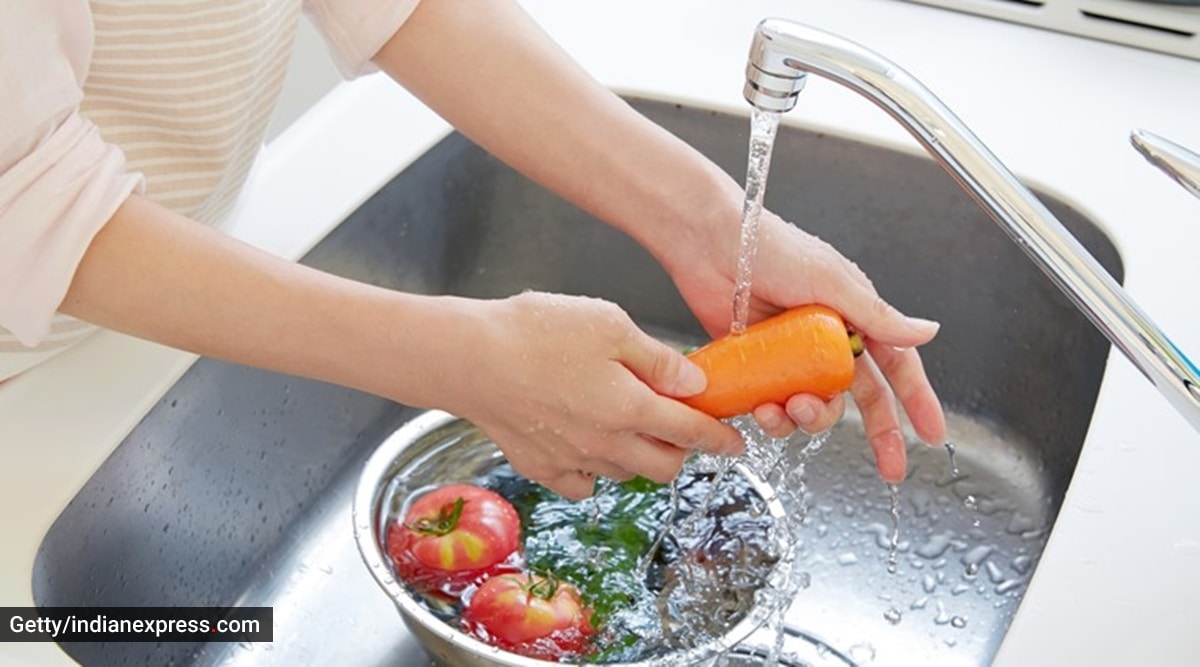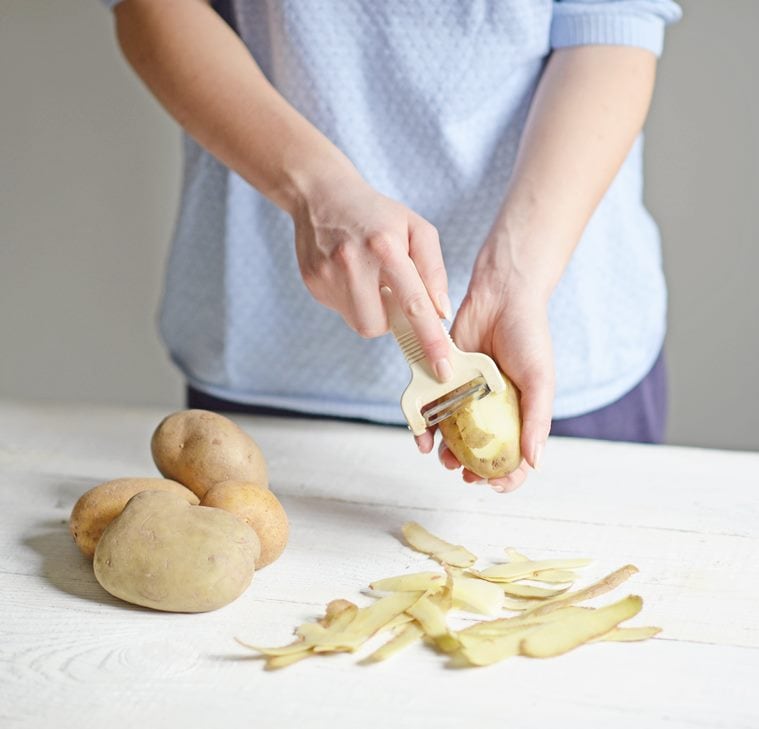 Ensure you wash vegetables first. (Source: Getty Images/Thinkstock)
Ensure you wash vegetables first. (Source: Getty Images/Thinkstock)
Vegetables provide us with a lot of nutrients. But did you know that the way we chop and peel vegetables impacts their nutrient content? And if you are now wondering whether you have been doing it wrong all this while, here are some expert tips from dietitian Garima Goyal that will help you in the kitchen.
Washing is the first rule when handling vegetables
Washing before cutting or peeling is the right way not just for removing dirt and harmful bacteria present on the outer layer of the vegetables but also to retain all the water-soluble vitamins present in them. Washing vegetables after chopping or peeling might result in losing the beneficial water-soluble vitamins.
Don’t use a dull knife
Many studies have suggested that vegetables may get damaged if cut with a dull knife. A blunt knife is more likely to cause unwanted damage that a sharp one. The blunt blade of a dull knife makes the vegetable more prone to electrolyte leakage which also includes the oozing out of potassium and calcium from them. This leakage, in turn, results in an increased amount of foul odour production.
Peeling
 Make sure you peel vegetables the right way. (Source: Getty Images/Thinkstock)
Make sure you peel vegetables the right way. (Source: Getty Images/Thinkstock)
Peeling the vegetable very closely to the skin and keeping the peeled layer very thin is the best possible way to derive maximum amount of nutrients from it. Interestingly, many studies have also seen an impact of hand peeling of vegetables like carrots with a simple store-bought peeler to the ones that are peeled through a machine in a factory setting. The harmful bacteria including E.coli and Listeria innocua are less likely to be present on the vegetables that are peeled by hand than the ones which undergo machine peeling process i.e. processed versions of these vegetables.
ALSO READ | Are you peeling fruits and vegetables the right way?
Chopping method
Dicing the vegetables very finely is not beneficial. It has often been seen that the more finely we tend to chop the vegetables to make them look nice and even, the more damage we are doing to its nutrients. Very finely chopped vegetable is more prone to fast spoilage than those which are roughly chopped. This method of chopping may make the vegetables lose their moisture and natural colour, thereby reducing its nutrient content as well. If you plan on keeping your vegetable handy for use by storing them, opt for cutting or chopping them into larger pieces.
Know your vegetables a little better
Not all vegetable need cutting, chopping or peeling. Try not to peel the entire vegetable and keep some skin to get the most out of some vegetables that have edible skin like cucumbers, tomatoes, potatoes and brinjal.
For more lifestyle news, follow us: Twitter: lifestyle_ie | Facebook: IE Lifestyle | Instagram: ie_lifestyle
📣 The Indian Express is now on Telegram. Click here to join our channel (@indianexpress) and stay updated with the latest headlines
For all the latest Lifestyle News, download Indian Express App.
© IE Online Media Services Pvt Ltd
"vegetable" - Google News
August 27, 2020 at 12:20PM
https://ift.tt/2Qvm46s
Here’s how to chop vegetables to maximise their nutritional value - The Indian Express
"vegetable" - Google News
https://ift.tt/2CyIOeE
https://ift.tt/3aVzfVV
Bagikan Berita Ini














0 Response to "Here’s how to chop vegetables to maximise their nutritional value - The Indian Express"
Post a Comment